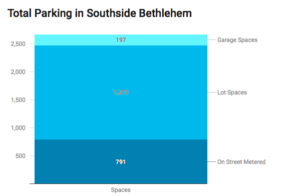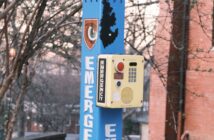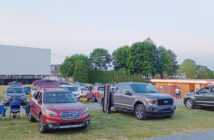 Connections, the transportation and parking plan as a part of the Path to Prominence, will go into effect on July 1, 2019. The plan will affect staff, faculty and graduate parking locations as well as campus transit.
Connections, the transportation and parking plan as a part of the Path to Prominence, will go into effect on July 1, 2019. The plan will affect staff, faculty and graduate parking locations as well as campus transit.
The Connections parking plan was publicly announced on Sept. 7, 2018, by Brent Stringfellow, associate vice president of facilities and university architect, and Mark Ironside, executive director of University Business Services. The plan was emailed to faculty and staff on Sept. 10.
The plan aims to reduce the number of on-campus cars while increasing utilization of the school’s transit systems.
Delicia Nahman, the university’s sustainability officer, said making Lehigh a walkable campus is imperative to a safer and healthier community.
“The heart of what Connections is responding to is the pedestrian experience — how we, as a university, make it safer for students, faculty and staff,” Nahman said.
The biggest change mentioned in the plan is the implementation of location-based permit prices. Under the new plan, permits for spots on the Asa Packer campus will cost $500 per year for faculty, whereas permits for parking spots on Mountaintop Campus and Goodman Campus will cost $250 per year. Additionally, parking permits for spots on the North Side in the commuter parking garage will be free.
The parking spot selection process for faculty will begin on April 1, 2019.
The new plan comes as the university takes away 518 existing parking spaces on the Asa Packer Campus as a result of construction related to the Path to Prominence. SouthSide Commons, the Bridge West residence hall and the College of Health are being built or are planned to be built where these spots are currently located.
“What we are seeing is that the parking on campus is being pushed out to the periphery of campus, making it safer for pedestrians to walk without cars moving past,” Nahman said. “That will definitely impact those who park on the interior of campus.”
More Campus Connector buses will be running during peak hours of the day in order to bring both staff and students from their commuter parking spots to Asa Packer campus. The Campus Connector services will begin running three to five buses from 7-2 a.m. throughout the week.
Douglas Mahony, an associate professor of management and the chair of the Faculty Senate, said the plan is consistent with the university’s values, but still raises major concerns for the faculty.
“While I agree with the philosophy of the plan, I think we need to recognize that there are subsets of our population that do not fit neatly into a specific category,” Mahony said. “There are a number of faculty that are spread across the campus that need to move freely between campuses. The idea that they can just take (the) bus service will work for some of them, but not necessarily for all in all circumstances.”
Iiona Scully, the president of the Graduate Student Senate, said graduate students will be impacted the most by these changes, based on both time and monetary costs.
“We spend a lot of our time (being TAs) and doing research, and we have to be on campus all the time and at very odd hours,” Scully said. “There are some students who have to be here on campus after internships or jobs and have to go right to class.”
Scully said if they have to park at Goodman Campus, then timeliness will be affected.
Scully also said that graduate students are often treated with lesser value than faculty and staff.
“For example, graduate students currently have restrictive parking policies that began this year as a test run for this new parking plan, whereas the faculty and staff do not,” she said. “These parking changes are like a catalyst for showing us that our part in the Lehigh presence is not as valued as other groups.”
Provost Pat Farrell sent out an email on Nov. 7 with changes to the plan in response to the graduate student backlash. The changes will give graduate students the same first year $250 subsidy as faculty and staff, in addition to ridding the costs of the students’ night and weekend passes. All passes will be valid for an entire year.
Scully said that regardless of these updated changes, the plan will continue to have a negative impact on all graduate students.
“My overall hope is that the plan allows for enough flexibility to meet the special needs as we identify the more particular groups so they can move in a way that is consistent with their job and experience,” Mahony said. “Graduate students are more like staff or faculty than they are like students, and they need to think of them in those terms as well.”





Comment policy
Comments posted to The Brown and White website are reviewed by a moderator before being approved. Incendiary speech or harassing language, including comments targeted at individuals, may be deemed unacceptable and not published. Spam and other soliciting will also be declined.
The Brown and White also reserves the right to not publish entirely anonymous comments.
1 Comment
I believe that many would support a long-term, strategic plan towards a more pedestrian-friendly campus.
In my view, that would logically begin with a close examination of the current movement patterns of pedestrians, and the condition of the sidewalks, stairs, and other pathways that are available (or lacking). I’m unsure how many of the B&W’s readers regularly walk through the South Side, for example, but I can say that many sidewalks are either non-existent, or impassible (Polk Street, Fillmore, the far east side of E. Packer). I also regularly see students, faculty and staff walking along roads–in the road–on Mountaintop and in between residence halls, Greek housing, and Lower Campus. I recognize that this is also a conversation with the City of Bethlehem, but what steps are being taken to improve the pedestrian experience and accessibility, for both the Lehigh community and our local community visitors? While I have heard an argument that creating more parking lots on campus “creates moats between Lehigh and the community” I find it difficult to accept that perspective. Parking lots (particularly ones that are free for visitors) do not create moats. Impassible (or non-existent) sidewalks and paid parking lots do.